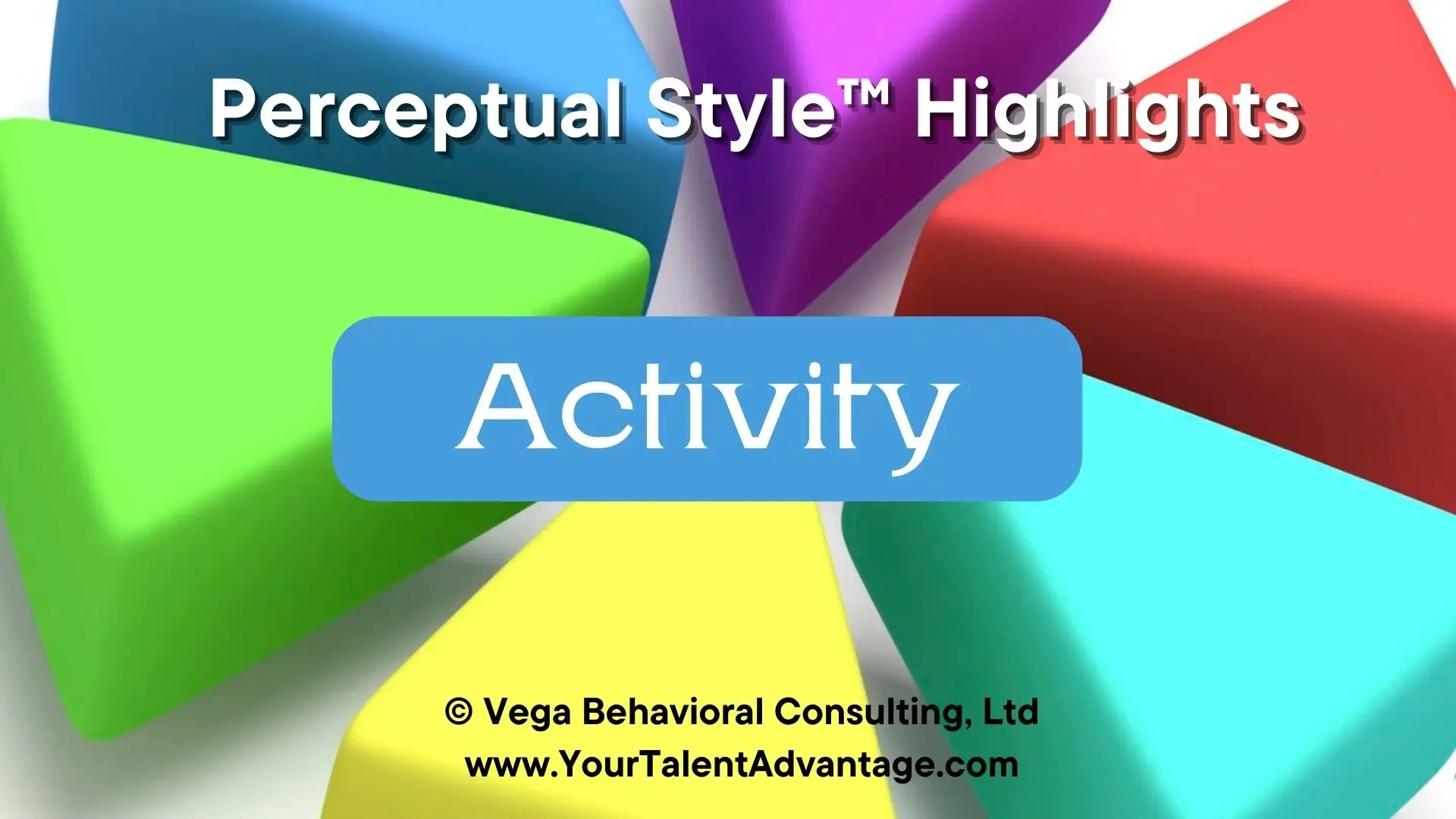
Methods Perceptual Style™ and Conflict
Resolving Conflict Logically
Conflict is part of life — and how you handle it shapes far more than the moment. Disagreements arise at work, at home, in families, and among strangers. Some are sparked by small misunderstandings; others build slowly from differences in expectations, priorities, or values. What matters is how you respond.
That’s where Perceptual Stylecomes in. If your style is Methods,you approach conflict like a puzzle to solve. You value facts over drama, clarity over chaos, and resolution over emotional reaction. You want things to make sense — and you’re willing to dig in, sort things out, and get everyone back on stable ground.

Why Understanding Conflict Matters
Conflict isn’t just about clashing opinions — it’s about how we connect and communicate when perspectives differ. How you handle conflict can:
-
Build trust through open dialogue.
-
Build trust through fairness and consistency.
-
Clarify misunderstandings with calm, structured dialogue.
-
Defuse tension by focusing on facts and practical solutions.
-
Create alignment by uncovering common ground.
Poorly managed conflict can feel messy and unproductive. But when you understand your Methods Perceptual Style,you gain the clarity to approach conflict with logic, objectivity, and steady confidence — turning discord into resolution that lasts.
How Methods People Experience Conflict
With the Methods Perceptual Style,you don’t view conflict as something emotional or dramatic — you see it as a disruption that needs to be understood and resolved efficiently. For you, the best way through tension is with clarity, structure, and calm reasoning.
You thrive when you can:
-
Analyze the situation to identify the root cause without getting swept up in emotional noise.
-
Stay grounded in facts and rational thinking to keep the conversation focused and fair.
-
Identify practical solutions that address the real issues and lead to clear resolution.
-
Settle issues clearly and promptly to remove the distraction and restore order.
But here’s the thing: when conflict feels chaotic, overly emotional, or lacking in clear logic, it’s frustrating. You need thoughtful discussion and a plan of action — not dramatics or circular debates.


Why Understanding Your Perceptual Style Matters
Your approach to conflict is a strength — logical, composed, and solution-oriented. But under pressure, you may come across as dismissive of emotions, get frustrated by messy communication, or push for resolution too quickly without full alignment.
When you understand your Methods Perceptual Style,you can:
-
Resolve conflict with calm, clarity, and rational focus.
-
Defuse tension by identifying the core issue and removing distractions.
-
Offer structured solutions that feel fair, practical, and sustainable.
Awareness allows you to use your natural strengths to bring clarity to confusion — resolving conflict in ways that restore order, preserve relationships, and keep things moving efficiently.
Take Action: Discover Your Perceptual Style
Stop letting conflict drain your energy — start turning it into clarity and resolution. The Perceptual Style Assessment™reveals how you naturally respond in moments of disagreement — and gives you practical strategies to resolve conflict with logic, focus, and confidence.
When you complete the assessment, you’ll receive:
-
A 45-page Celebrate You!action guide tailored to the Methods Perceptual Style.
-
Insights into your conflict-resolution strengths and how to use them effectively.
-
Tools to address issues calmly and efficiently — without unnecessary drama or delay.
Don’t wait — unlock your power to transform conflict into clarity, resolution, and restored balance!

Explore the Six Perceptual Styles and Conflict
Curious about how different Perceptual Styleapproach conflict? Explore below for insights into each unique style:
Understanding your style is just the beginning. Recognizing how others experience conflict empowers you to turn tension into trust, disagreement into dialogue, and challenges into lasting solutions.
Frequently Asked Questions about the Methods Perceptual Style and Conflict
What does it mean to have the Methods Perceptual Style™?
You experience the world as sensible and workable. Facts matter, order helps, and clear steps turn confusion into progress. You’re at your best when there’s a plan, roles are defined, and you can move from A → B → C with calm, steady follow-through.
What are some of the natural strengths of Methods?
You bring clarity, consistency, and trust. You break complex things into doable parts, set practical expectations, and keep promises. You listen for facts, weigh trade-offs fairly, and design repeatable routines that make life smoother for everyone — at home and at work.
How does the Methods style show up in Conflict?
You de-escalate with facts. You separate the problem from the feelings, outline options and trade-offs, and guide everyone toward a sensible agreement.
What are a few common blind spots—and how can I manage them?
Because you value logic, strong feelings or “gut calls” can seem impractical — and people may feel dismissed. Try a quick two-step: acknowledge (“I hear this matters to you”) then clarify (“Here’s what the facts suggest we try first”). When plans drift, it’s easy to double-down on process; add a short “Does this still solve the real problem?” checkpoint to keep results — not just routines — front and center.
How can understanding my Methods strengths help me thrive?
Knowing your Perceptual Style helps you build a life that fits — clear roles, realistic timelines, and environments where fairness and reliability are valued. You can design simple systems (family schedules, home projects, shared checklists) that reduce stress for everyone, and you can pair your steady pace with brief moments of flexibility when circumstances change. That balance turns structure into support, not constraint.
Can my Perceptual Style change over time?
No — your Perceptual Style is innate. What evolves is how you apply it. As your awareness grows, you’ll refine when to lead with process and when to flex, so your strengths land even better with the people around you.





